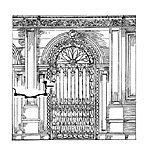
Candles & Candlemas
REMINDERS OF OUR LORD
Candles are a bit like angels: The secular world seems to have acquired a taste for them as the Church seems to be going in the opposite direction. Admittedly, the analogy limps: Candles haven’t been eclipsed in churches the way talk of angels (good and, especially, bad) has.
Think of the proliferation of candles in homes, both scented (perhaps another reminder that people like “smells and bells”) and unscented. They’re clearly not utilitarian: electrification has triumphed, and even if Thomas Edison’s incandescent invention has been banned in the name of “climate change,” there’s something about the light of a candle that your energy-efficient light-emitting diode can’t replicate. (I profess no awareness of whether your candle might someday be confiscated due to its carbon-emitting wick-print.)
Yes, people are attracted by candles. There’s a reason why liturgies such as Tenebrae and the Service of Light at the start of the Easter Vigil make deep impressions on us. But there is a utilitarian aspect to candles as well, which many Catholics have forgotten, one deserving attention as the Church celebrates the Feast of the Presentation of the Lord on February 2.
Once upon a time, Catholics showed up at church on that day because it was Candlemas, when the priest blessed candles. (He still does.) Catholics brought those blessed candles home as sacramentals, and they were common features in their homes, along with pictures of the Sacred Heart and Our Lady, a crucifix behind which palms were kept from one Lent to another, and holy water.
You May Also Enjoy
We may stand for someone we decidedly do not revere. Kneeling, however, is a clear signal of reverence and even worship.
Bells are used to warn or to summon. Bells express just about every mood and exigency; they are joyful, somber, pragmatic, ceremonial.
Problems with how liturgical studies uses history and canon law are tied together by an undercurrent: how liturgical studies fails to use theology.

